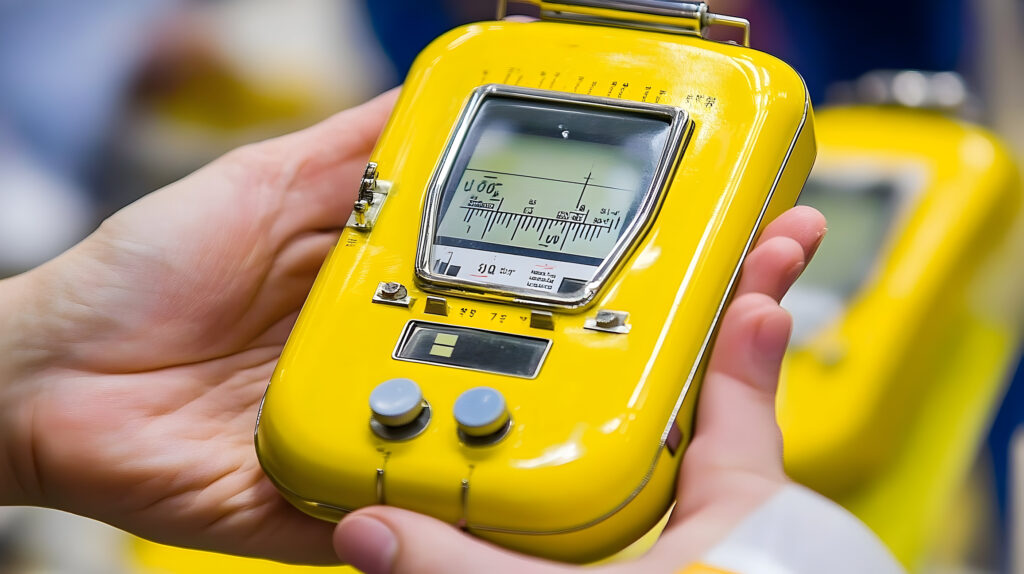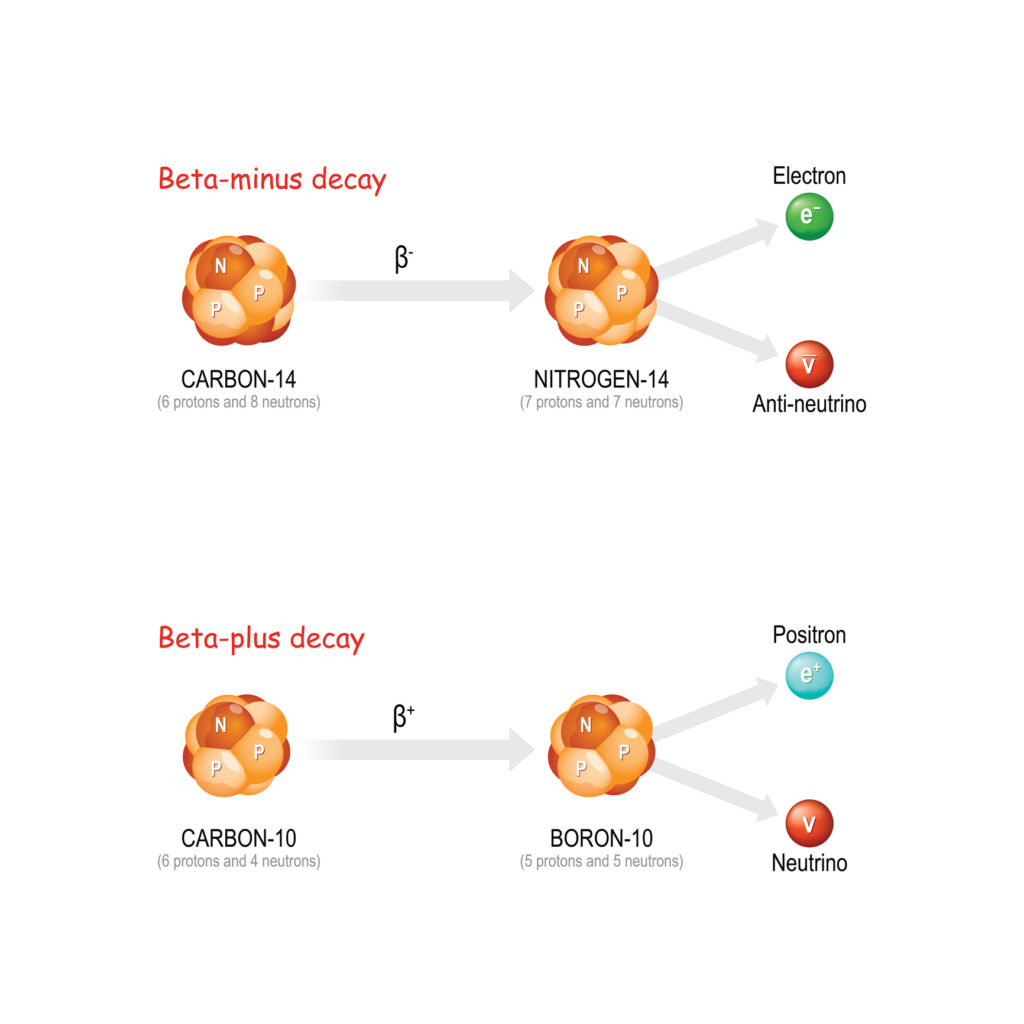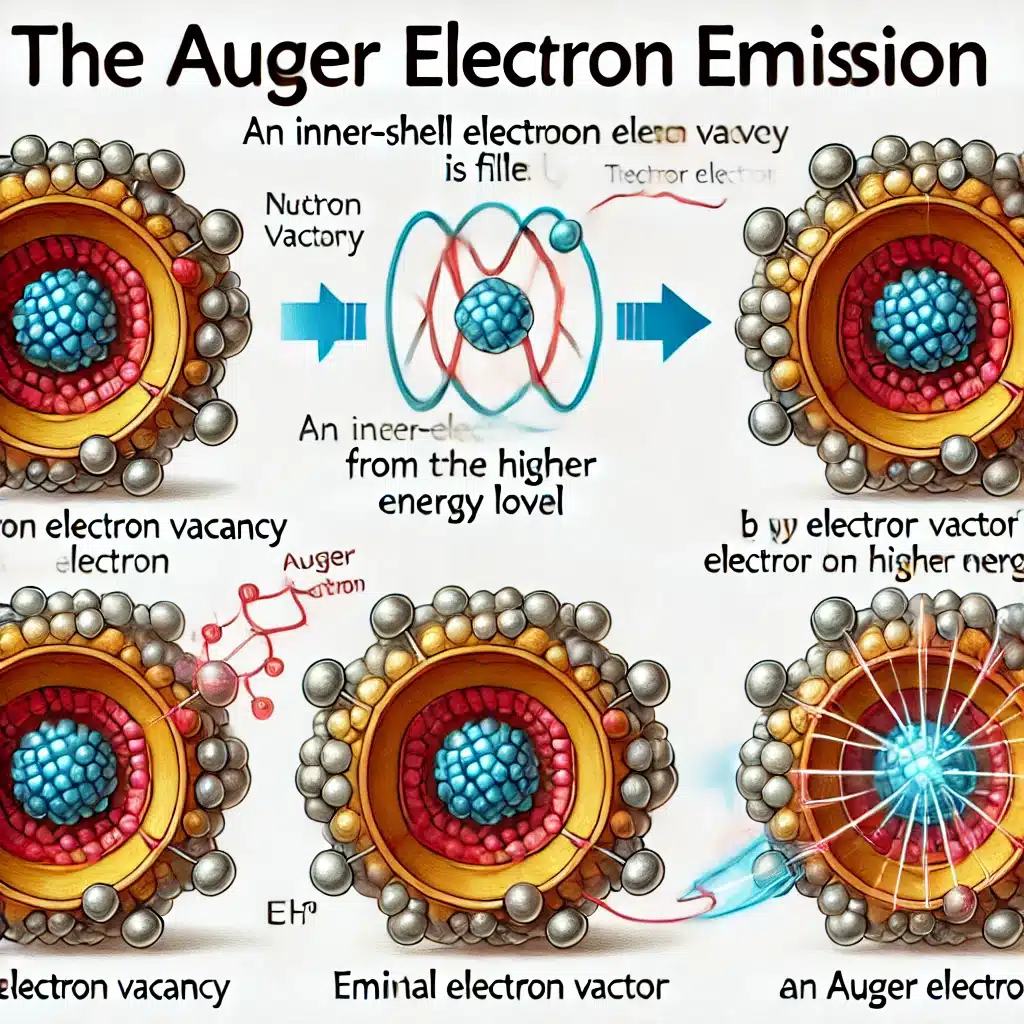Quarks are fundamental particles that constitute one of the essential building blocks of matter. They form the basis of hadrons, such as protons and neutrons, and are bound together by the strong nuclear force mediated by gluons. This article looks into the nature of quarks, exploring their types, properties, interactions, and significance in the Standard Model of particle physics. The discussion begins with an introduction to quarks, their discovery, and the development of the quark model, followed by an in-depth analysis of their characteristics, such as charge, spin, and colour charge. The article further examines the role of quarks in forming hadrons, the dynamics of quark confinement, and the phenomenon of asymptotic freedom. Finally, the exploration of quarks in modern physics, including their implications in quantum chromodynamics (QCD) and ongoing research efforts in particle physics, is presented.
Introduction to Quarks
Quarks are elementary particles that, together with leptons, form the foundation of matter in the universe. The concept of quarks was first proposed in 1964 by physicists Murray Gell-Mann and George Zweig as part of their effort to explain the perplexing array of particles observed in high-energy physics experiments. Before the introduction of quarks, the discovery of numerous hadrons (particles composed of quarks, like protons and neutrons) had led to the so-called “particle zoo,” which suggested a more profound, underlying structure.
Quarks are unique in several ways: they possess fractional electric charges, exhibit a property known as “colour charge,” and cannot exist in isolation under normal conditions—a phenomenon known as quark confinement. The Standard Model of particle physics, the theory that describes the fundamental forces and particles in the universe, incorporates quarks as one of its critical components. Understanding quarks is crucial for explaining the behaviour of matter at the most fundamental level.
Types and Properties of Quarks
Flavours of Quarks
Quarks come in six different types, or “flavours”: up, down, charm, strange, top, and bottom. These flavours are distinct in their masses and charges, playing different roles in the formation of hadrons.
- Up Quark (u): The up quark is the lightest quark, with a charge of +2/3e. It is a fundamental constituent of protons and neutrons.
- Down Quark (d): The down quark, slightly heavier than the up quark, has a charge of -1/3e and is also a key component of protons and neutrons.
- Charm Quark (c): The charm quark is significantly heavier than the up and down quarks, with a charge of +2/3e. It plays a role in forming mesons such as the J/ψ particle.
- Strange Quark (s): The strange quark, with a charge of -1/3e, is involved in the composition of strange particles, like kaons.
- Top Quark (t): The top quark is the heaviest of all quarks, with a charge of +2/3e. Its discovery in 1995 confirmed the completeness of the quark model.
- Bottom Quark (b): The bottom quark has a charge of -1/3e and, like the top quark, is involved in heavy particle physics.
These flavours combine in different ways to form various hadrons, contributing to the diversity of particles observed in nature.
The table below summarises the key properties of the six types (flavours) of quarks:
| Quark | Symbol | Electric Charge | Approximate Mass (MeV/c²) | Spin | Colour Charge | Role/Description |
| Up | u | +2/3 e | 2.3 | 1/2 | Red, Green, Blue | Fundamental constituent of protons and neutrons. Lightest quark. |
| Down | d | -1/3 e | 4.8 | 1/2 | Red, Green, Blue | Fundamental constituent of protons and neutrons. Slightly heavier than up quark. |
| Charm | c | +2/3 e | 1,275 | 1/2 | Red, Green, Blue | Heavier quark, involved in forming particles like the J/ψ meson. |
| Strange | s | -1/3 e | 95 | 1/2 | Red, Green, Blue | Involved in the formation of strange particles like kaons. |
| Top | t | +2/3 e | 173,100 | 1/2 | Red, Green, Blue | Heaviest quark, confirmed the completeness of the quark model. |
| Bottom | b | -1/3 e | 4,180 | 1/2 | Red, Green, Blue | Participates in heavy particle physics, such as in B mesons. |
Approximate Mass: Given in mega-electron volts per speed of light squared (MeV/c²), masses are approximate due to varying measurement techniques.
Spin: Quarks have a spin of 1/2, which is intrinsic angular momentum.
Colour Charge: Quarks can carry one of three “colour” charges, red, green, or blue, as part of Quantum Chromodynamics (QCD).
Quark Charge
One of the most intriguing aspects of quarks is their fractional electric charge, unlike the integer charges observed in other particles, such as electrons and protons. The up, charm, and top quarks carry a charge of +2/3e, while the down, strange, and bottom quarks have a charge of -1/3e. This fractional charge is critical for forming hadrons, where the total charge of the hadron is the sum of the charges of its constituent quarks.
For instance, a proton is composed of two up quarks and one down quark, resulting in a total charge of +1e. Similarly, a neutron consists of one up quark and two down quarks, leading to a net charge of 0. This delicate balance of charges is essential for the stability of matter as we know it.
Quark Spin
Quarks, like all fermions, have a property called spin, which is a form of intrinsic angular momentum. Quarks have a spin of 1/2, making them subject to the Pauli exclusion principle, which states that no two identical fermions can occupy the same quantum state simultaneously. This property is crucial in determining the quantum states of hadrons, influencing their overall spin and magnetic moments.
In a proton, for example, the spins of the three quarks combine in a way that gives the proton a total spin of 1/2. The arrangement of quark spins within hadrons is a complex and active area of research, as it directly relates to the strong interactions between quarks and the gluons that mediate these forces.
Colour Charge and Quantum Chromodynamics (QCD)
Quarks possess an additional property known as “colour charge,” which is related to the strong force that binds quarks together. Unlike electric charge, which can be positive or negative, colour charge comes in three types: red, green, and blue. The term “colour” here is purely metaphorical and has no relation to actual colours in the visible spectrum.
The strong force, described by the theory of Quantum Chromodynamics (QCD), is responsible for holding quarks together within hadrons. Gluons, the force carriers of the strong interaction, also carry colour charge and constantly exchange between quarks, ensuring that the quarks remain bound together. According to QCD, only colour-neutral combinations of quarks can exist as free particles, which is why we observe quarks in pairs (mesons) or triplets (baryons) rather than in isolation.
Formation of Hadrons
Hadrons are composite particles made up of quarks held together by the strong force. They are divided into two main categories: baryons and mesons. Baryons, such as protons and neutrons, consist of three quarks, while mesons are made of one quark and one antiquark. The process by which quarks combine to form hadrons is governed by the principles of QCD, particularly the rules of colour charge.
Baryons
Baryons are a class of hadrons composed of three quarks. The most familiar baryons are protons and neutrons, which form the nuclei of atoms. Protons consist of two up quarks and one down quark, giving them a charge of +1e, while neutrons are made up of one up quark and two down quarks, resulting in a net charge of 0.
Baryons can exist in various excited states, known as baryon resonances, which decay into lower-energy states by emitting particles such as pions. The study of baryons and their interactions is fundamental to understanding nuclear physics and the forces that hold atomic nuclei together.
Mesons
Mesons are hadrons consisting of one quark and one antiquark. They are generally less stable than baryons and often exist as intermediate particles in high-energy processes. Mesons play a crucial role in mediating the strong force between baryons, particularly in the interactions within atomic nuclei.
The most well-known mesons include pions and kaons, which are involved in nuclear decay processes. The study of mesons has provided significant insights into the strong force and the behaviour of quarks at high energies.
Quark Confinement and Asymptotic Freedom
One of the most remarkable features of quarks is that they cannot be isolated or observed directly. This phenomenon, known as quark confinement, arises from the nature of the strong force, which becomes stronger as quarks are pulled apart. Instead of diminishing with distance like the electromagnetic force, the strong force increases, effectively preventing quarks from escaping their bound states within hadrons.
Quark Confinement
Quark confinement is a direct consequence of the properties of the strong force, as described by QCD. When quarks are pulled apart, the energy of the strong interaction increases, leading to the creation of quark-antiquark pairs that bind with the original quarks, forming new hadrons. This process ensures that quarks remain confined within hadrons and are never observed as free particles.
The confinement of quarks is a central concept in particle physics, and while it has been experimentally observed, a complete theoretical understanding remains one of the major challenges in QCD. The phenomenon of confinement also explains why only colour-neutral particles, such as baryons and mesons, are observed in nature.
Asymptotic Freedom
While quarks are confined at low energies and large distances, their behaviour changes dramatically at very high energies and short distances. Asymptotic freedom refers to the property of the strong force that causes quarks to interact more weakly as they come closer together. At extremely high energies, such as those encountered in particle accelerators, quarks behave almost like free particles, with the strong force becoming negligible.
This discovery, for which the 2004 Nobel Prize in Physics was awarded to David Gross, Frank Wilczek, and David Politzer, has profound implications for our understanding of the early universe. During the first moments after the Big Bang, the universe was in a state of extremely high energy, where quarks and gluons existed freely in a quark-gluon plasma. The study of asymptotic freedom continues to be an active area of research, particularly in understanding the conditions of the early universe and the behaviour of matter at extreme energies.
The Role of Quarks in the Standard Model
The Standard Model of particle physics is the theoretical framework that describes the fundamental particles and forces of the universe. Quarks are an integral part of this model, and their interactions, mediated by the strong force, are described by Quantum Chromodynamics (QCD).
Quarks and the Electroweak Force
In addition to the strong force, quarks also interact via the electroweak force, which unifies the electromagnetic and weak forces. The weak force is responsible for processes such as beta decay, where a neutron decays into a proton, an electron, and an antineutrino. In this process, one of the down quarks in the neutron is converted into an up quark, mediated by the W boson, a carrier of the weak force.
The electroweak theory, which forms part of the Standard Model, successfully unifies the electromagnetic and weak forces into a single framework. Quarks, with their fractional charges and participation in weak interactions, are essential in understanding the unification of these forces.
The Higgs Mechanism and Quark Mass
The masses of quarks are generated through their interaction with the Higgs field, a scalar field that permeates the universe. The discovery of the Higgs boson in 2012 confirmed the existence of this field, which gives mass to the W and Z bosons and, indirectly, to quarks and other particles.
Quarks acquire different masses based on their interaction strength with the Higgs field. The top quark, for example, has a much stronger interaction with the Higgs field than the up or down quarks, resulting in its significantly larger mass. The Higgs mechanism is a cornerstone of the Standard Model, explaining how particles acquire mass and providing a deeper understanding of the fundamental properties of quarks.
Quarks in Modern Physics
The study of quarks has evolved significantly since their initial proposal, and they continue to play a central role in modern physics. Advances in particle accelerators and detection technologies have allowed scientists to probe deeper into the structure of matter, leading to new discoveries and a better understanding of the universe.
High-Energy Physics and the Large Hadron Collider (LHC)
The Large Hadron Collider (LHC), the world’s largest and most powerful particle accelerator, has been instrumental in studying quarks and their interactions. By colliding protons at unprecedented energies, the LHC has allowed scientists to observe rare processes and search for new particles predicted by theories beyond the Standard Model.
One of the key achievements of the LHC was the discovery of the Higgs boson, which provided critical evidence for the mechanism that gives mass to quarks and other particles. The LHC continues to explore the frontiers of particle physics, including the study of quark-gluon plasmas, searches for new forms of matter, and tests of quantum chromodynamics at extreme energies.
Quark-Gluon Plasma and the Early Universe
Quark-gluon plasma is a state of matter that existed in the early universe just microseconds after the Big Bang. In this state, quarks and gluons were not confined within hadrons but existed freely in a hot, dense medium. Understanding quark-gluon plasma is crucial for understanding the evolution of the universe from its earliest moments.
Experiments at the LHC and other facilities, such as the Relativistic Heavy Ion Collider (RHIC), have recreated quark-gluon plasma in the laboratory by colliding heavy ions at high energies. These experiments provide insights into the properties of the early universe and the behaviour of quarks and gluons under extreme conditions.
Quark Research Beyond the Standard Model
While the Standard Model has been remarkably successful in explaining the fundamental particles and forces, it is not a complete theory. Several questions remain unanswered, such as the nature of dark matter, the matter-antimatter asymmetry in the universe, and the unification of the fundamental forces.
Research into quarks and their interactions continues to be at the forefront of efforts to extend the Standard Model. Theories such as supersymmetry, which propose the existence of partner particles for every known particle, and models that incorporate extra dimensions, could provide a deeper understanding of quarks and their role in the universe.
This table summarises the number of quarks in various particles:
| Particle | Type of Particle | Constituent Quarks | Number of Quarks | Quark Composition |
| Proton | Baryon | Up, Up, Down | 3 | 2 Up (u), 1 Down (d) |
| Neutron | Baryon | Up, Down, Down | 3 | 1 Up (u), 2 Down (d) |
| Pion (π⁺) | Meson | Up, Anti-Down | 2 | 1 Up (u), 1 Anti-Down (d̅) |
| Pion (π⁰) | Meson | Up, Anti-Up / Down, Anti-Down | 2 | 1 Up (u), 1 Anti-Up (u̅) / 1 Down (d), 1 Anti-Down (d̅) |
| Pion (π⁻) | Meson | Down, Anti-Up | 2 | 1 Down (d), 1 Anti-Up (u̅) |
| Kaon (K⁺) | Meson | Up, Anti-Strange | 2 | 1 Up (u), 1 Anti-Strange (s̅) |
| Kaon (K⁰) | Meson | Down, Anti-Strange / Strange, Anti-Down | 2 | 1 Down (d), 1 Anti-Strange (s̅) / 1 Strange (s), 1 Anti-Down (d̅) |
| Kaon (K⁻) | Meson | Strange, Anti-Up | 2 | 1 Strange (s), 1 Anti-Up (u̅) |
| Lambda (Λ) | Baryon | Up, Down, Strange | 3 | 1 Up (u), 1 Down (d), 1 Strange (s) |
| Sigma (Σ⁺) | Baryon | Up, Up, Strange | 3 | 2 Up (u), 1 Strange (s) |
| Sigma (Σ⁰) | Baryon | Up, Down, Strange | 3 | 1 Up (u), 1 Down (d), 1 Strange (s) |
| Sigma (Σ⁻) | Baryon | Down, Down, Strange | 3 | 2 Down (d), 1 Strange (s) |
| Xi (Ξ⁰) | Baryon | Up, Strange, Strange | 3 | 1 Up (u), 2 Strange (s) |
| Xi (Ξ⁻) | Baryon | Down, Strange, Strange | 3 | 1 Down (d), 2 Strange (s) |
| Omega (Ω⁻) | Baryon | Strange, Strange, Strange | 3 | 3 Strange (s) |
| Delta (Δ⁺⁺) | Baryon | Up, Up, Up | 3 | 3 Up (u) |
| Delta (Δ⁻) | Baryon | Down, Down, Down | 3 | 3 Down (d) |
Mesons are particles made of one quark and one antiquark.
Conclusion
Quarks are fundamental components of matter, playing a crucial role in the structure of the universe and the forces that govern it. Their discovery and the development of the quark model have revolutionised our understanding of particle physics, leading to the formulation of the Standard Model and the exploration of Quantum Chromodynamics.
From the early universe to modern-day experiments at the LHC, the study of quarks has provided profound insights into the nature of matter, the forces that bind it, and the origins of the universe. As research continues, quarks remain a central focus in the quest to unravel the deepest mysteries of the cosmos and extend our understanding beyond the current limits of the Standard Model. The journey to understand quarks is ongoing, promising new discoveries and deeper insights into the fundamental nature of reality.
Disclaimer
The content of this article, “Secrets of Quark Particles: The Building Blocks of the Universe”, is intended for informational and educational purposes only. It does not constitute professional scientific advice or formal instruction in physics. While efforts have been made to ensure the accuracy of the information presented, Open MedScience makes no guarantees or warranties regarding the completeness, reliability, or accuracy of the content. Readers are encouraged to consult academic sources, peer-reviewed publications, or qualified experts for more detailed and authoritative explanations of the topics discussed.
Any views or interpretations expressed in this article are those of the authors and do not necessarily reflect the official position of Open MedScience or its affiliates. Open MedScience is not liable for any direct or indirect damages or losses arising from the use or misuse of the information provided.
This article may include simplified explanations of complex physical theories for accessibility. Scientific understanding evolves with ongoing research, and some information may be subject to revision as new discoveries are made.
You are here: home » diagnostic medical imaging blog »



